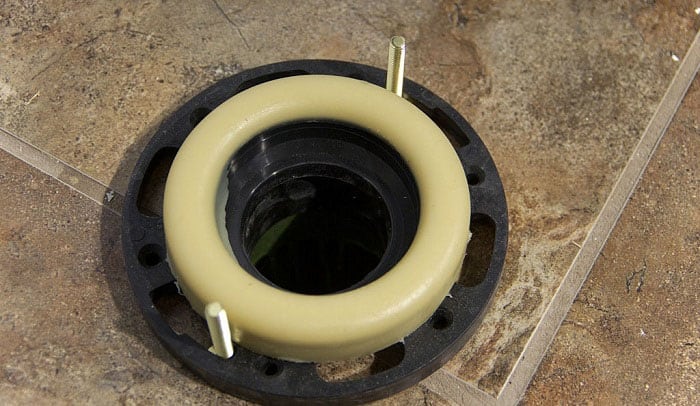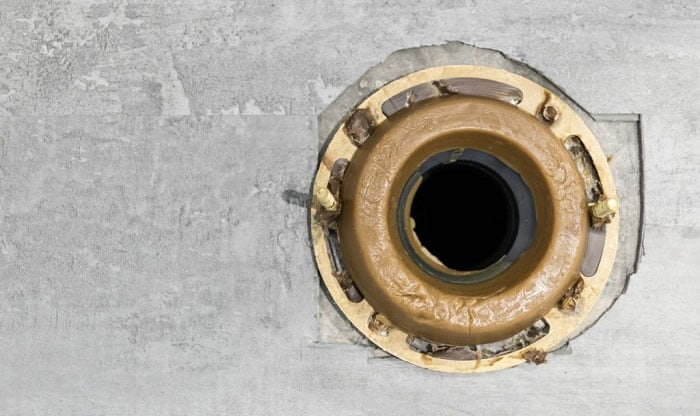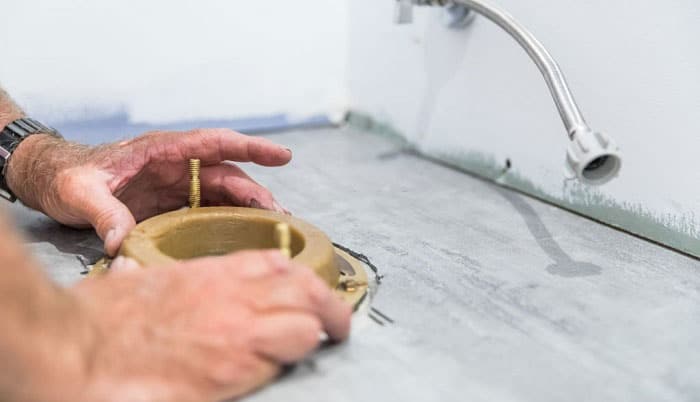You can mainly prevent leakage if you have a reliable toilet ring on its base. Wax rings were used in the past for decades in the plumbing industry. Hence, this period of continuous use proves its effectiveness. But a new toilet ring made of heavy-duty rubber prevents you from messing with wax.
You may be torn between wax vs wax-free toilet seals. Wax rings are known for sealing the connection between the toilet and floor. They’re reliable but need to be wrangled to put them in the proper position. This practice is unnecessary when having a wax-free toilet seal.
With the strong adhesive on a non-wax seal, you don’t need to deal with a mess. For clarifications, read this toilet wax ring vs rubber seal.
Table of Contents
More Information About Wax and Wax-free Toilet Seals
The efficacy of the wax ring shouldn’t be undermined due to the new version that is wax-free. You may want to try a new way of sealing your toilet. It’s just reasonable to tackle toilet wax ring vs waxless seal and let you learn everything about each of them.
Wax ring: tested and proven but inconvenient
A toilet seal, known as a tank-to-bowl gasket, creates a slightly flexible seal between the toilet and the flange that gets in contact with the floor. You’ll see this seal on traditional toilets.
Originally, this classic wax ring was made of beeswax. However, manufacturers use other materials such as petroleum and vegetables. The ring is placed on the toilet’s bottom and the flange’s top.
An adapter is necessary if the flange is below floor level. In this case, you may also stack a pair of wax seals, but it’s not ideal. After all, the necessary pressure for a perfect seal comes from the toilet as it compresses the wax to match the exact shape of the flange.
Most plumbers still use wax seals because it’s suitable for some cases. For instance, this is the only option if the flange is quite high and can’t be lowered. Even the thinnest wax-free seal won’t have the amazing compressing ability of wax.
Despite getting the job done, some plumbers think that wax seal is an outdated and messy method. To mold wax, room temperature is necessary. It’s hard to mold a cold or warm wax if the temperature is not right. The toilet’s weight will just squeeze too warm wax instead of compressing.
Some modern bathrooms have heated floors. But it won’t be a problem with wax rings since older bathrooms don’t have a heating system.
Wax-free toilet seal: easier and cleaner alternative
The wax-free toilet seal can be in the form of rubber or foam. There are PVC seals with deeper flanges as well. They are easier to use in a DIY project. You may stick them with the provided adhesive.
Once they’re in place, you can place the toilet on the flange with the ring seals as compression goes on. The advantage of this part is narrowing the mistakes that you can make.
Although this option has the edge when looking at wax-free toilet seal vs wax ring, you have to make sure that seal has been compressed properly. If not, the toilet will be wobbly and its weight will be carried by the flange.
With the said situation, foam seals can fill the gaps to stabilize the seal. However, PVC and rubber seals can’t do this. Anyway, the temperature won’t bother you when placing the seal.
When Removing or Replacing Toilet Seal
You can’t blame those who stick with wax seals as they’re durable. They can last up to 20 years or more, given that the toilet isn’t moved. When using a wax seal, you also have to consider the size of the toilet’s base.
New toilet models usually have a smaller base. So, they can rock, especially on uneven floors. You have to be mindful when applying the seal or else, corrosion can cause more than just loosening the floor bolts. This part will often bump as well.
These issues can break that seal to only encourage bacteria or mold growth and wastewater leak out. It can also require you to clear out a blockage. Moreover, a time will come when you need to replace the wax seal.
In the case of wax-free seals, some offer a 10-year guarantee, but sadly, they can’t go on for the period that a wax ring can. Note that bleach and corrosive chemicals can easily damage the foam and rubber seals. You may use a safe toilet cleaner but it’s not the ultimate solution. The need for replacement will also take place.
Showing the comparison of Fluidmaster toilet seal vs wax ring can help you decide further. Fluidmaster doesn’t only offer a 10-year warranty but it’s considered a universal gasket to fit 3 or 4 inches of drain lines and any toilet. You’ll experience convenience as repositioning during installation is possible with this blue ring.
This is the perfect option if you want to avoid messing with wax or getting the substance on your hands. You can skip worrying about temperature as well. But wax rings won’t melt right away when placed in a bathroom with a heating system. Therefore, sealing your toilet by yourself is made easier and more convenient.
In terms of removal or replacing wax ring vs Fluidmaster wax-free seal, the latter has an edge because you can reuse it when renovating your bathroom. Nothing can stop you from doing it as long as it’s attached to the toilet and in good condition.
When using a wax ring while renovating your bathroom, you can add another ring or a flange extender. But removal and cleaning, later on, will also double the mess. More so, there may be a need to scrape off excess with a putty knife.
Summing It Up
Now, you know the advantages and disadvantages of wax vs wax-free toilet seals. Your decision mainly depends on your preference. Choose a wax ring if you believe in a proven and tested approach. The wax-free seal is for you if you prefer a mess-free method.
The type of the flange will also matter in your decision to choose the right one to use. Hence, it’s crucial that you know the toilet you’re buying or already have in your bathroom.

I’m Paulk Webb, and I work as a writer for Saveourwaterrebates. I’m happy to put in the time and effort to conduct market research to identify the most pressing issues faced by households concerning their plumbing. Feel free to check out our guides to get the most informed recommendations for how to solve your problems.




